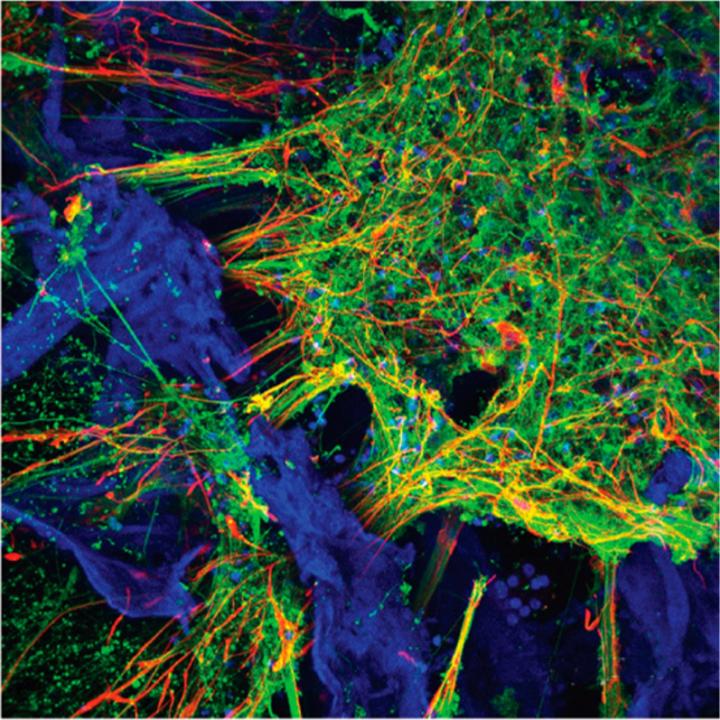Scientists at the University of Washington have successfully completed what is believed to be the most complex human brain-to-brain communication experiment ever. It allowed two people located a mile apart to play a game of “20 Questions” using only their brainwaves, a nearly imperceptible flash of light, and an internet connection to communicate.
Brain-to-brain interfaces have gotten much more complex over the last several years. Miguel Nicolelis, a researcher at Duke University, has even created “organic computers” by connecting the brains of several rats and chimps together.
Videos by VICE
But in humans, the technology remains pretty basic, primarily because the most advanced brain-to-brain interfaces require direct access to the brain. We’re not exactly willing to saw open a person’s skull in the name of performing some rudimentary tasks for science.
Using two well-known technologies, electroencephalography EEG and transcranial magnetic stimulation (TMS), Andrea Stocco and Chantel Prat were able to increase the complexity of a human brain to brain interface.
The EEG was used to read one person’s brain waves, while the TMS machine was used to create a “phosphene”—a ring of light perceptible only to the wearer—on the other.
In the experiment, the EEG wearer was shown an object—a shark, for instance. The TMS wearer then used a computer mouse to ask a question of the EEG wearer—maybe “can it fly?” The EEG wearer then focused on a screen flashing either “yes” or “no.” The brain waves were then read and transferred via the internet. If the answer was “yes,” the TMS wearer would see a phosphene, suggesting he or she was on the right track to guessing the object.
The whole setup looks something like this:

Image: PLOS One
In 72 percent of games, the guesser was able to eventually get to the correct object. In a control group, just 18 percent of guessers were.
As I mentioned, both of these technology are well-known and are used in medical settings regularly. There is perhaps no totally new technological breakthrough here, but it’s a clever way of hooking neurological devices to each other to complete a task. In a paper published in PLOS One, Stocco and Prat write that the task is “collaborative, potentially open-ended, operates in real-time, and requires conscious processing of incoming information.”
“Because phosphenes are private to the receiver and can be perceived under a variety of conditions, or even while performing other actions, they represent a more versatile and interesting means of transferring information than [previous brain-to-brain interfaces],” they wrote.
Neither Stocco nor Pratt were able to talk to me today because they were in the process of moving offices, but in a press release published by the university, they suggest that future experiments could be less gimmicky and more therapeutic. Future experiments will connect the brains of someone who suffers from ADHD and someone who doesn’t to see if it’s possible to induce the ADHD student to a higher state of attention.
Such experiments align closely with Nicolelis’s work at Duke: He told me that he believes it may be possible to connect a healthy brain with a stroke-damaged one to induce the damaged brain to perform at a higher level, which he thinks may have lasting effects.
In its current state, that’s a best-case scenario for brain-to-brain interfaces. Right now, it makes more sense to, say, type your thoughts to someone rather than communicate them using brain waves and fancy machines. So, in that sense, we may be creating brain stimulation devices moreso than communication devices.
“Our paradigm does not transfer information better than would be expected with canonical means, such as when two individuals communicate verbally,” they wrote. Still, they “see this as an exciting venue for future research.”



